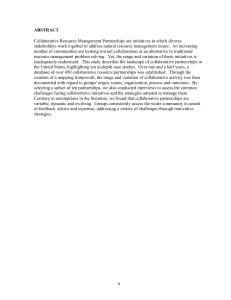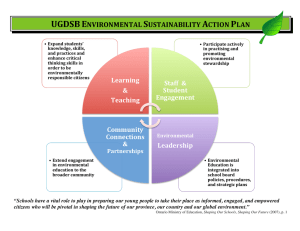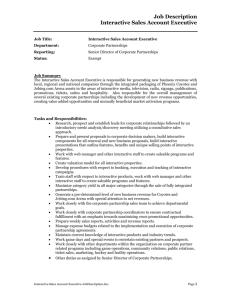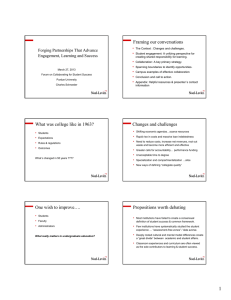Maintaining Your Partnerships Template
advertisement
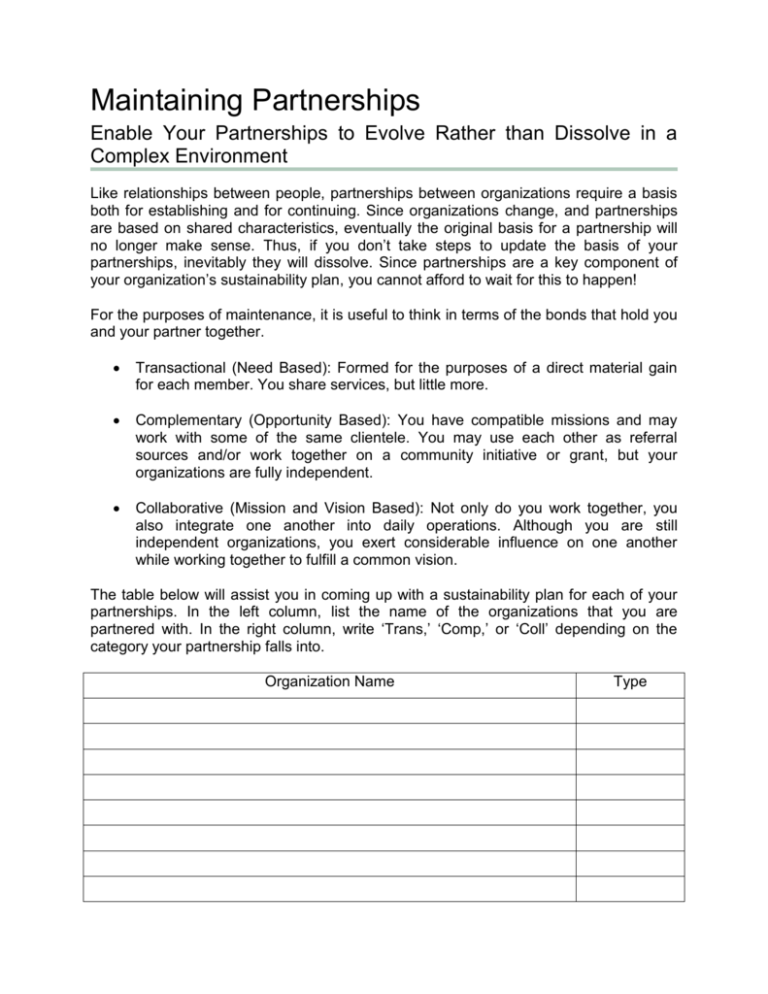
Maintaining Partnerships Enable Your Partnerships to Evolve Rather than Dissolve in a Complex Environment Like relationships between people, partnerships between organizations require a basis both for establishing and for continuing. Since organizations change, and partnerships are based on shared characteristics, eventually the original basis for a partnership will no longer make sense. Thus, if you don’t take steps to update the basis of your partnerships, inevitably they will dissolve. Since partnerships are a key component of your organization’s sustainability plan, you cannot afford to wait for this to happen! For the purposes of maintenance, it is useful to think in terms of the bonds that hold you and your partner together. Transactional (Need Based): Formed for the purposes of a direct material gain for each member. You share services, but little more. Complementary (Opportunity Based): You have compatible missions and may work with some of the same clientele. You may use each other as referral sources and/or work together on a community initiative or grant, but your organizations are fully independent. Collaborative (Mission and Vision Based): Not only do you work together, you also integrate one another into daily operations. Although you are still independent organizations, you exert considerable influence on one another while working together to fulfill a common vision. The table below will assist you in coming up with a sustainability plan for each of your partnerships. In the left column, list the name of the organizations that you are partnered with. In the right column, write ‘Trans,’ ‘Comp,’ or ‘Coll’ depending on the category your partnership falls into. Organization Name Type Maintenance Trust is fundamental to all partnerships. Do whatever you can to prove that you will always uphold your end of the bargain! Transactional: Maintenance of a transactional partnership entails ensuring that the arrangement continues to fulfill each partner’s needs. Ensure that you and your partner communicate any situational changes pertinent to your agreement. Make plans to meet with someone who has decision making authority or connections at least twice a year to discuss how the current arrangements are working and what adjustments might be made. Complementary: Maintenance depends upon each partner continuing to find new opportunities to work together. Always be on the lookout for new opportunities to work together on a project. In general, your communication with your partners should be more regular and greater in scale than with a transactional partnership. Even when no new opportunities are available, make arrangements to talk at least quarterly. Collaborative: Maintenance depends upon the partners’ continued agreement with the collaborative’s direction, as well as relationships between members. Due to the complex dynamics, leaders need to come up with their own schedule to discuss maintenance of a common vision and resolution of any problems that develop. Since relationships are especially important, consider implementing institutional structures, such as an annual get-together, to foster a sense of camaraderie.

